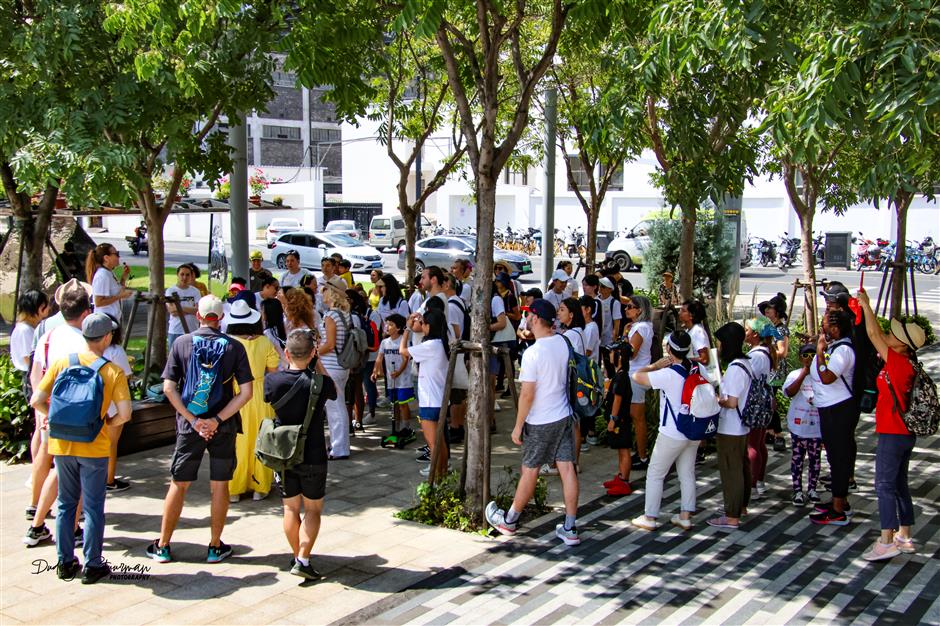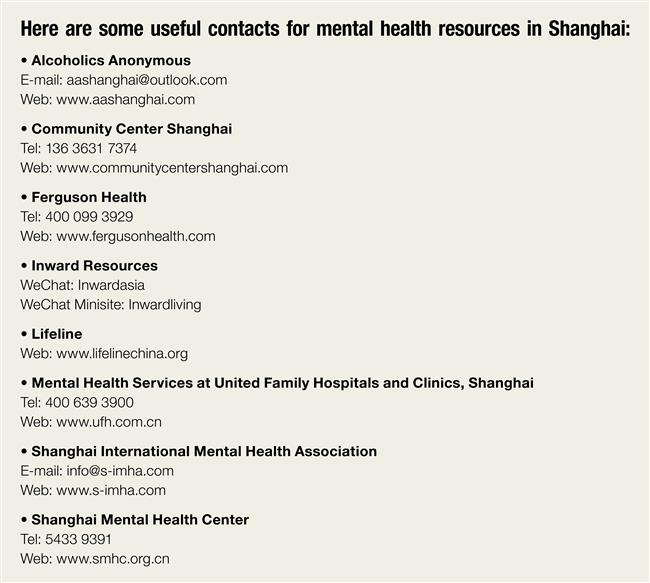Walk for life: 'Creating Hope Through Action' in Shanghai
Shot by Hu Jun. Edited by Zhong Youyang. Reported by Emma Leaning. Subtitles by Wang Xinzhou.
Last weekend I met a lady whose niece was struggling with thoughts of suicide. So am I. That's two-thirds of the people you've met in this story so far. It's high time we shed light on a truth we try to avoid: Suicide is not a distant problem. It lurks within our communities, workplaces, friendships and families, impacting lives in ways we cannot ignore.
Every year, over 700,000 people die by suicide and many more attempt it. Suicide ranks as the fourth leading cause of death among 15 to 29-year-olds, with common methods including pesticide ingestion, hanging and firearms. In China alone, 120,000 lives are lost to suicide yearly. That's one life every five minutes. These aren't just statistics; they are lovers, parents, siblings, children and friends. The impact of such tragedies is immeasurable, leaving behind feelings of abandonment, anger, guilt and depression.
Facing such pain and painful statistics, it's natural to feel overwhelmed. But there's hope. World Suicide Prevention Day, established in 2003 by the International Association for Suicide Prevention in conjunction with the World Health Organization, sheds light on this critical issue. The campaign aims to draw collective attention toward suicide, reduce stigma and elevate awareness among organizations, governments and the public. This year, people around the world united under the theme "Creating Hope Through Action." As a writer, I'm obsessed with words and felt compelled to explore the ones chosen here. Why "Creating Hope Through Action?" Why not belief or faith? What sets hope apart from its many synonyms?

Emma talks to Flora (right) from Community Center Shanghai and Ans (left) from Lifeline about World Suicide Prevention Day.
The question of hope has been the stuff of philosophers throughout history. Among notable thinkers are Albert Camus, Soren Kierkegaard and Martha Nussbaum. What unites them is the shared belief that hope cannot exist in isolation, it needs action to be meaningful. Camus saw hope as a rebellious act against the absurdity of life. He argued that hope was not about expecting the best outcome but facing the world with courage and dignity. To Kierkegaard, hope isn't about wishful thinking, instead it's the passionate striving for something not yet in our grasp. Nussbaum's view of hope demands imagination and practical action. She argues that hope is about working toward what we want, even in the face of adversity. In order to have hope, we can't just dream of a better future, we must take concrete steps toward it.
Which is exactly what happened on September 10. Organized by Community Center Shanghai to benefit subsidized counseling and Lifeline's helpline service, over 75 mental health advocates walked in recognition of those impacted by suicide, starting at the Cool Docks and heading along the Huangpu River to the North Bund.

Walkers gather at the Cool Docks and head along the Huangpu River to the North Bund.
As I walked with our city's compassionate advocates and professionals, I had a simple but significant question: "What do you hope our actions today will achieve?"
The responses formed a clear chorus, reflecting the unity and determination of the group. Skylah-Rose walked to "spread awareness and gain more support within our communities." Jordan's presence resonated with a wider ambition, to "raise awareness around mental health and suicide, as an issue in China and more broadly across the world." Meanwhile, Kevin carried the powerful desire of breaking down the "stigma to sharing feelings and fears."
Stigma prevents many individuals touched by the lonely hand of suicide from seeking the support they need. This stresses the critical importance of fostering awareness and education around mental health. Mirian Bonomi, a psychologist and counselor at Shanghai Community International School, emphasizes that while each person expresses pain differently, there are common signs to watch for. Withdrawing from social interactions, notable changes in behavior and despairing comments are all signs of struggle.

Mirian Bonomi
And we mustn't be afraid to approach those we're worried about. It's not true that addressing someone who is already suicidal will worsen the situation. Asking someone about their well-being will not cause death. But silence might. Suicide is preventable. Bonomi advises us to be aware of the signs and open to talking. The simple act of asking "are you OK" and listening without judgment can be a lifeline for someone in need. Isn't it promising that three words can save a life?
Going back to this year's World Suicide Prevention Day message. I've come to understand the importance of the word "hope" next to the word "action." Hope is yearning for something out of reach, there are no guarantees. While you read this article, someone will have lost their battle to suicide. So, our choice is paramount. We can yield to despair or embrace uncertainty. My hope is that we collectively forge a world characterized by empathy and understanding, where heartfelt conversations save lives.
Only through action can we embark on a journey of hope, walking toward a future where no one dies by suicide.

















